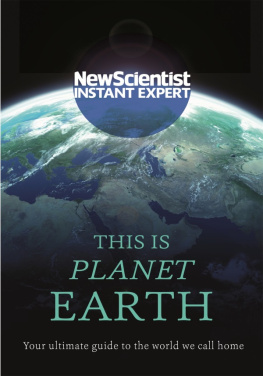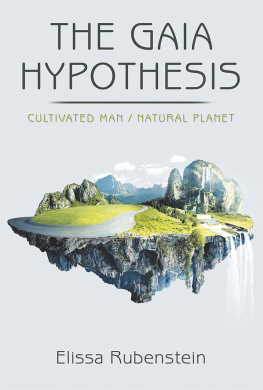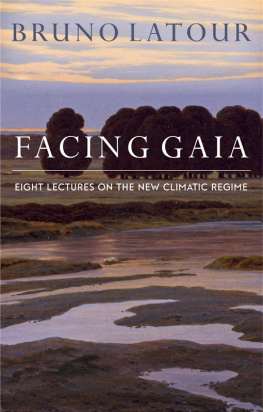Gaia
A New look at Life on Earth
James Lovelock is an independent scientist, inventor, author, and has been an Honorary Visiting Fellow of Green College, University of Oxford, since 1994. He was elected a Fellow of the Royal Society in 1974 and in 1990 was awarded the first Amsterdam Prize for the Environment by the Royal Netherlands Academy of Arts and Sciences. Further awards include the Nonino Prize and the Volvo Environment Prize in 1996, and Japans Blue Planet Prize in 1997. He was awarded a CBE in 1990 by Her Majesty the Queen.
One of his many inventions was the electron capture detector, which was important in the detection and measurement of CFCs in the atmosphere. He worked with NASA and some of his inventions were adopted in their programme of planetary exploration. His other books include The Ages of Gaia and Homage to Gaia (also published by Oxford University Press) and Gaia: The Practical Science of Planetary Medicine.
Gaia
A new look at life on Earth
James Lovelock


Great Clarendon Street, Oxford OX2 6DP
Oxford University Press is a department of the University of Oxford.
It furthers the Universitys objective of excellence in research, scholarship,
and education by publishing worldwide in
Oxford New York
Athens Auckland Bangkok Bogota Buenos Aires Calcutta
Cape Town Chennai Dares Salaam Delhi Florence Hong Kong Istanbul
Karachi Kuala Lumpur Madrid Melbourne Mexico City Mumbai
Nairobi Paris Sao Paulo Singapore Taipei Tokyo Toronto Warsaw
with associated companies in Berlin Ibadan
Oxford is a registered trade mark of Oxford University Press
in the UK and in certain other countries
J. E. Lovelock 1979, 1987, 1995
First published 1979
First issued as an Oxford University Press paperback 1982
Revised impression 1987
Reprinted 1995
Reissued, with a new preface and corrections, 2000
All rights reserved. No part of this publication may be reproduced,
stored in a retrieval system, or transmitted, in any form or by any means,
without the prior permission in writing of Oxford University Press,
or as expressly permitted by law, or under terms agreed with the appropriate
reprographics rights organization. Enquiries concerning reproduction
outside the scope of the above should be sent to the Rights Department,
Oxford University Press, at the address above
You must not circulate this book in any other binding or cover
and you must impose this same condition on any acquirer
British Library Cataloguing in Publication Data
Data available
Library of Congress Cataloging in Publication Data
Data available
ISBN 0192862189
10 9 8 7 6 5 4 3 2
Typeset in Swift
by George Hammond Design
Printed in Great Britain by
Cox & Wyman Ltd,
Reading, Berkshire
Contents
Preface
Twentysix years ago when I first started writing this book, I had no clear idea of what Gaia was although I had thought deeply about her. What I did know was that the Earth was different from Mars and Venus. It was a planet with apparently the strange property of keeping itself always a fit and comfortable place for living things to inhabit. I had the idea that somehow this property was not an accident of its position in the Solar System but was a consequence of life on its surface. The word Gaia came from my friend and near neighbour, the novelist William Golding. He thought that such an idea should be named Gaia after the Greek goddess of the Earth.
In those days of the early 1970s, we were still innocent about the environment. Rachel Carson had given us cause to worry, farmers were destroying the pleasant countryside we knew by the overuse of chemicals but it all still seemed all right. Global change, biodiversity, the ozone layer, and acid rain all were ideas barely visible in science itself, still less of public concern. We were all to some extent participants in the cold war and far more of our time went into serving in that war than we ever realized. As a scientist involved with NASAs planetary exploration programme I was only dimly aware that the lift vehicles that took our experiments to Mars and beyond would never have been made for pure science alone. We were riding the war horses of the silent war between the Soviet Union and the United States. The navigation system that faultlessly found its way to a chosen destination on Mars could also have precisely enabled the demolition of an enemy missile battery.
The cold war distorted much more than space science. To my mind, the most serious damage done was to our understanding of our own planet. We were naturally fearful of the consequences of a hot war fought with nuclear weapons and knew that at the least it would destroy the civilizations of the combatants. These real fears led to the growth in the West of the Campaign for Nuclear Disarmament (CND) and it became the first international environmental movement. So pressing were our anxieties over the consequences of nuclear war that at times it seemed that nuclear radiation was the quintessence of our fears. The dangers of habitat destruction and the inflation of the air with greenhouse gases seemed remote and trivial concerns in the 1970s and 1980s, especially to those campaigning for the abolition of everything nuclear.
When the cold war fizzled out in the last years of the century we had an environmental movement which included active members who came from the old CND and they were still mainly fighting the industrial and military systems of the West that sustained nuclear weapons. It was easy for them to transfer their campaign to attacking all science-based large companies of the First World especially where there was a link, however tenuous, with a threat to humanity.
I consider this politicization of Green thought and action has led us dangerously astray. It stops us from realizing that it is not them, the multinational companies or the state industries of Russia and China that are wholly to blame for our fast degrading world. Our much too vociferous advocates, the consumer lobbies, and we the consumers are equally responsible for the gaseous greenhouse and the extinction of wildlife. The multinational companies would not exist if we had not demanded their products and at a price that forces them to produce without enough care for the consequences. In our belief that all that matters is the good of humankind we foolishly forget how much we depend upon all the other living things on Earth.
We need to love and respect the Earth with the same intensity that we give to our families and our tribe. It is not a political matter of them and us or some adversarial affair with lawyers involved; our contract with the Earth is fundamental, for we are a part of it and cannot survive without a healthy planet as our home. I wrote this book when we were only just beginning to glimpse the true nature of our planet and I wrote it as a story of discovery. If you are someone wanting to know for the first time about the idea of Gaia, it is the story of a planet that is alive in the same way that a gene is selfish.
This book is the story of Gaia, about getting to know her without understanding what she is. Now twenty-six years on, I know her better and see that in this first book I made mistakes. Some were serious, such as the idea that the Earth was kept comfortable by and for its inhabitants, the living organisms. I failed to make clear that it was not the biosphere alone that did the regulating but the whole thing, life, the air, the oceans, and the rocks. The entire surface of the Earth including life is a selfregulating entity and this is what I mean by Gaia. I was also foolish to suggest that we could warm the Earth in the event of an imminent ice age by deliberately releasing chlorofluorocarbons into the air, exploiting their potent greenhouse effect to keep us warm. In those days of innocence, the technological fix was respectable. I have not altered the original text to correct any of these mistakes, although a parenthetic correction follows these errors. The story is as it was and lets you see how the idea of Gaia developed, not only in science, but also as part of thought on a wider scale. I never imagined in 1974 just how wide this might be.
Next page







